
Within five years of going through a separation or divorce, up to half of parents will have remarried, meaning that early years practitioners will work with a wide range of family structures and care arrangements.
One of the fastest-growing family types in Britain is the stepfamily. In 2011, 85 per cent of these ‘blended’ families had a mother and stepfather, while in 11 per cent they were formed of a father and stepmother, and four per cent included children from both partners’ previous relationships (General Lifestyle Survey for Great Britain). It is therefore important for practitioners to get to know the make-up of individual families and be aware of potential issues and day-to-day practicalities that this may involve – from the logistics of children splitting their time between different households to the emotions of adjusting to a new step-parent.
‘Practitioners need to understand families come in all shapes and sizes. They need to be aware there is a lot of variety and not make assumptions,’ says relationship counsellor and Family Lives trustee Suzie Hayman.
Getting to know each family is vital in order to best meet the child’s needs. Hazel Davies, NDNA early years adviser, recommends reviewing your registration and settling-in process to ensure that all families are able to engage with the setting:
- If you supply parents with ‘All about me’ forms, are these given to both parents?
- Are both parents invited to be part of the settling-in process?
- Do both parents know how to contact the setting?
- Do you have a range of families represented throughout the setting, for example on displays and in books?
Ensuring both parents are kept up to date with the child’s development and any nursery information is vital, so make arrangements for how to share this. Will both parents attend a meeting or would they prefer separate ones?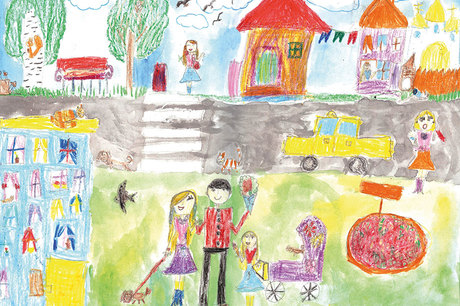
‘ORDINARINESS’
There are many different arrangements for how children divide their time between parents, ranging from visits for a few hours or a weekend to spending alternate weeks with each parent. Whatever the agreement, children are resilient and can cope, but Ms Hayman believes that what children desperately need is ‘ordinariness’, with a lot happening that’s the same rather than special. ‘They don’t want to see a parent at weekends and always be going to museums or McDonald’s. They want to be at home with their friends and playing with their toys,’ she says.
‘Children can cope well with different rules in their two different homes because they are used to doing that between home and nursery or school. But problems can arise if parents relax rules to endear themselves or get at the other parent. Both parents need to agree on the basic rules, such as TV watching and discipline, and stick to them.’
Dee Holmes, senior practice consultant at Relate, cautions that children can feel sad that they are leaving their mummy to go to daddy, and vice versa. ‘This can happen whether it’s a cycle of alternate weekends or every four or five days,’ she says. ‘As adults, all we can do is acknowledge that sadness and ensure that they have their core comforts, such as their teddy, to help them to adjust.
‘Also, children can adapt better to new living arrangements if they know what is happening. It can be useful to have a calendar, using pictures for pre-readers, to tell them where they’ll be staying or tell them how many sleeps until they next see their daddy in order to embed the routine.’
Settings can provide some practical help for children who are being cared for in shared arrangements, such as storing car seats, buggies and overnight bags if there is the space.
Ms Davies suggests having a setting/home diary that travels with the child to keep both families updated on things such as mealtimes and any accidents. ‘Treating all family members non-judgmentally and with respect will go a long way to ensure positive relationships with all concerned,’ she adds.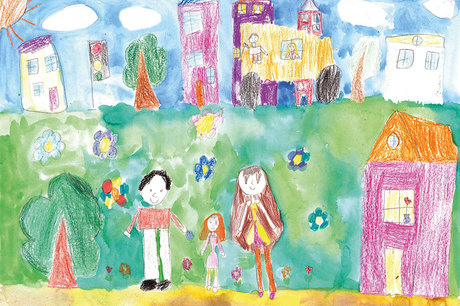
SHARED PARENTING
Even when the disruption of splitting time between parents seems unsettling for the child, research has found that continued contact with both parents is important, unless there are safeguarding issues (See ‘All about…Family breakdown’, Nursery World, 6 February 2017). ‘Parents have to take on board that the only person they punish with any shenanigans around contact is the child. It’s the child who suffers the most. Making contact difficult may be punishing for the ex, but the children are punished more,’ says Ms Hayman.
While coming from a home where parents have separated doesn’t necessarily affect a child’s life chances, it is an added factor for the child to adapt to and deal with. The key is good communication. ‘Children whose parents separate and manage their relationship well go on to have the same life chances as those from “intact” families,’ says Honor Rhodes, director of strategic development at Tavistock Relationships. ‘It all depends on the nature of conflict between parents. Children need adults who will care for them really well, and co-parents can do that, especially when a lot of thought is given to the child feeling in the centre of their world and not unloved.’
It’s when children have to endure unresolved conflict that they are harmed. This can raise cortisol levels to the same as those living in a war zone. ‘If there is a persistent high level of endured conflict then a child is certainly more likely to be less physically and emotionally well, will do less well at school and will make poorer partner choices themselves,’ Ms Rhodes says.
The addition of a new partner, and perhaps children, can lead to arguments or tension between parents who were previously co-parenting well, warns Ms Holmes. It can also be upsetting and disruptive for their children and there can even be a feeling of disloyalty and guilt if the child likes the new partner. How a child adjusts to a blended family is very personal but can also depend on age:
Under-fives Not as aware of ‘family politics’, so can be more accepting of a new adult in their life; thrive on cohesive relationships so may adjust more easily to a new family; could feel competitive for their parent’s attention, especially if there are new siblings; have a need for attachment and may become ‘clingy’ with their natural parent.
Primary-school age Likely to need more time to bond with the new partner; need reassurance that it’s an extra parent, not a replacement for their mummy or daddy; feel their sense of identity and position in the family threatened by a new older or younger sibling in the family.
Teenage May be less involved in family life, preferring to spend time with their friends; feel resentful at having to adopt new family routines, rules and traditions, and may resist the changes.
‘A blended family is the same as any family, there are toddler tantrums and teenage angst but there is also the overlay of unfinished business from the end of the first family – divorce, death, or whatever has gone on in the background. A parent can be caught up in it being a new beginning for them and forget that for the child concerned it can be the final nail in the fantasy of their family getting back together,’ says Ms Hayman.
‘Also, gaining step-siblings can wipe out a child’s identity – they may go from being the eldest to the youngest and knock their place in the family. Sibling rivalry can be exacerbated by strangers, whether that’s full- or part-time, and seeing another child spending more time with your parent than you do can be hurtful and cause enormous resentment.’
Children are capable of adapting to a new family situation, provided that they are not asked to keep secrets or take sides, but Ms Rhodes cautions: ‘Children notice practical things and it can mean and represent something – have they shared a room before? Are the cups different? Does the family represent the birth order? Adults need to understand that for children everything has meaning.’
But it should not be assumed that a child will be automatically upset or jealous when there are changes to their family structure. It is not necessarily a bad thing and can be the chance of a child gaining a happy family life.
‘Changes such as a parent having a new baby are big and will add a new dimension,’ says Ms Holmes. ‘It’s important to make sure that the child is aware of it and knows what is going to happen, but having siblings is an important life lesson, whether they’re full or half-siblings. There are different stages that a child may need to adjust to, but there are big changes in life anyway.’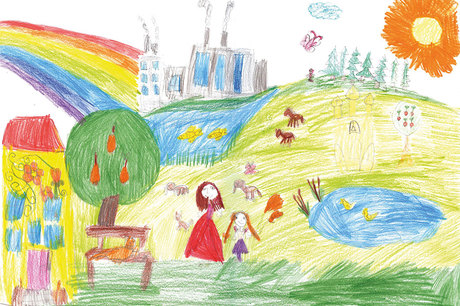
LEGAL ISSUES
Advice from NDNA’s Legal Helpline
The EYFS states: ‘Parents and/or carers must be given access to all records about their child, provided no relevant exemptions apply to their disclosure under the DPA34.’
If both parents continue to have parental responsibility they can both make decisions regarding their child.
If one parent has a residence order for the child, the other parent still has the right to take the child from the nursery and be kept informed of the child’s progress.
If a parent does not have parental responsibility, or has a court order in place to prevent this, the nursery must have a copy of this documentation for the child’s records.
Nurseries must ensure no member of staff takes sides regarding separation and treats both parents equally and with due respect.
Parents should provide the nursery with all information relating to parental responsibilities, court orders and injunctions and work with the nursery to ensure continuity of care for their child.
A setting should not ‘police’ a court order or dispute. The family or families need to make decisions about the child and inform the nursery of their conclusions. For example, a parent with parental responsibility may delegate to a new partner to collect the child, but if this is disputed by the other parent it needs to be sorted out by them.
Any changes to family arrangements need to be in writing according to a setting’s policy. If necessary they will need a court order.
If the nursery has any safeguarding concerns, they must report them through the usual channels, as they would under any circumstances. For example, if a parent or delegate wants to collect the child but is clearly behaving in a concerning manner, speak with this person quietly away from the child. If this is not resolved, either report it to the multi-agency safeguarding hub (MASH) or the police, depending on how serious the immediate situation is.
If in doubt seek legal advice, particularly where access to the child is restricted.
CASE STUDY
 Claire has three children from three marriages – Tom (14), Alice (nine) and Jake (three). They all live with her third husband, Jake’s dad, who also has a son from a previous relationship*
Claire has three children from three marriages – Tom (14), Alice (nine) and Jake (three). They all live with her third husband, Jake’s dad, who also has a son from a previous relationship*
‘My first husband left when our son, Tom, was just two weeks old. It was an incredibly stressful time and I struggled with depression as a result, which must have had an effect on Tom even though I loved and cared for him,’ says Claire.
‘Tom was two and a half when I met my future second husband, Pete. Tom’s dad had nothing to do with him for quite a while and I think he craved a man in his life and was happy having Pete around. We married and had a daughter, Alice, but sadly we started arguing and separated around her second birthday. It was a big relief for Tom who was six at the time. Pete had become very snappy with him. Alice thought moving house was fun and living in a less stressful environment must have been a bonus.
‘I met Luke, my husband, through a sports club. With hindsight, Tom needed more time to get to know Luke better before he became part of our family, but I got pregnant, which put our relationship on fast forward. Thankfully, four years later, they have a good relationship and both children dote on their little brother.
‘Merging families can have difficulties, especially deciding what to do with all the stuff from two households, but luckily we agree on routines and discipline. My step-son visits frequently and Tom enjoys playing videogames with him.
‘I’ve forced myself to put my personal feelings about my ex-husbands on hold and not speak badly about them. It’s not my place to stain their relationships. This was especially hard with Tom’s dad because he was so cruel and I feel Tom sensed that. For a while he’d cry and beg not to go to his dad’s. Now Tom and Alice spend every other weekend with their dads. Alice sees her dad for a couple of hours on Tuesdays too.
‘Alice’s father is easy to deal with and Tom’s is getting better. I keep them informed of school events and they come if they want to. The teachers are familiar with our situation and always make two copies of everything and we have the option of going to parents’ evenings separately. The children often make two cards.
‘We split birthdays – I get odd years, the dads get even – and I have every Christmas with the children, while they get New Year’s Eve. Occasionally Tom and Alice get a bit sad that they have to go here and there. I remind them that it’s because they’re loved by lots of people. Many of their friends live in blended families and split their weekends between houses, so they don’t feel different. It’s the new normal.’
*names have been changed
USEFUL WEBSITES
National Family Mediation, www.nfm.org.uk
http://theparentconnection.org.uk
http://tavistockrelationships.org
BOOKS FOR CHILDREN
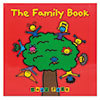 The Family Book
The Family Book
by Todd Parr
Celebrates all varieties families come in.
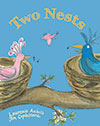 Two Nests
Two Nests
by Laurence Anholt
Baby Bird can fly around the cherry tree to both his nests.
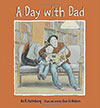 A Day with Dad
A Day with Dad
by Bo Holmberg
The emotions of a child who doesn’t live with one of his parents.
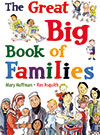 The Great Big Book of Families
The Great Big Book of Families
by Mary Hoffman
An optimistic look at today’s different families.
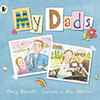 My Dads
My Dads
by Kelly Bennett
A girl explains why her dad and stepdad are completely different but both love her.
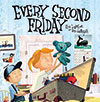 Every Second Friday
Every Second Friday
by Kiri Lightfoot
Margi and Totty go and stay at Dad’s house where they get magnificently muddy, worryingly wet and mind-blowingly messy.
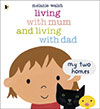 Living with Mum and Living with Dad: My two homes
Living with Mum and Living with Dad: My two homes
by Melanie Walsh
A lift-the-flap book about a girl with two bedrooms and two sets of toys.
 Raising You Alone
Raising You Alone
by Warren Hanson
The quirks of living in a single-parent family.
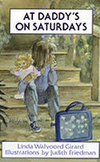 At Daddy’s on Saturdays
At Daddy’s on Saturdays
by Linda Walvoord Girard
Katie discovers she can keep a loving relationship with her father even though he lives apart.
Information for parents and carers
‘All about…Family breakdown’ by Annette Rawstrone, Nursery World, 6 February 2017
Supporting Children’s Experiences of Loss and Separation by Pre-school Learning Alliance
A Short Guide to Working with Co-Parents by Honor Rhodes, Tavistock Relationships. Free to download, www.tavistockrelationships.ac.uk
Parents as Partners is a free programme for those wanting to work on their relationship to help their children, run by Tavistock, www.tavistockrelationships.org/relationship-help/parents-as-partners-programme
The Guide for Separated Parents: Putting children firstby Karen and Nick Woodall
Be a Great Step-Parent by Suzie Hayman
Have a Happy Family Life by Suzie Hayman
The NDNA’s Helpline, 01206 846090, and policy on separated families, are both free to members









